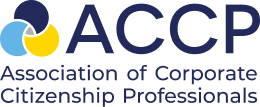Legal
Providing Employee Assistance
KPMG created a report that reviews the options for employers, and some of the advantages and disadvantages of each.
Venable LLP posted insights on corporate foundations and employee hardship.
SHRM highlighted legal guidelines to establishing employee crisis funds.
Trends
Increase Funding for an Existing Employee Assistance Fund
- Allocate existing or expanded corporate contributions to the EAF
- Allow employees to cash out their paid time off (PTO) and donate it to the EAF
- Allow employees to donate stock to the fund
- Allow employees to take voluntary pay cuts to support the fund
Make EAFs More Accessible
- Waive a requirement for minimum time employed by the company
- Be more flexible about the definition and criteria for hardships
- Change the maximum grant limit in one of two ways – either increasing the dollar amount to provide more comprehensive support or decreasing the existing grant limit to assist a greater number of employees (using the federal government stimulus funding as a guide)
Streamline the Process for Applying for and Receiving Funds
- Make the application easier to find on the website or in HR packets, and create a less cumbersome application form
- Create a leaner decision-making process in order to act quickly
- Determine the possible needs of employees in advance and anticipate costs to meet those needs, so allocations are easy to execute
- Make paid time off days an option for payout from the EAF or allow employees to cash-in their own PTO to self-fund
- Use the EAF fund as a “last resort” internally by making core business changes instead, such as increasing the number of PTO days, and increasing hourly workers pay rate
